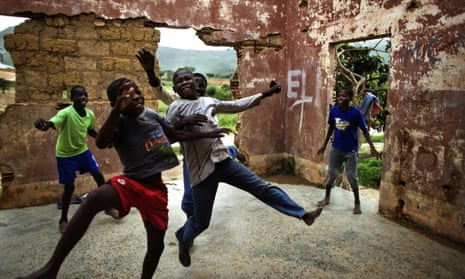The world’s main donors have hailed what they called a “historic agreement” to modernise the statistical system by which aid flows are calculated, saying this will allow them to better meet global development targets after 2015.
After a two-day meeting in Paris, the development arm of the Organisation for Economic Co-operation and Development (OECD) said the changes – the first in 40 years – “will create incentives to mobilise more and better financing for development”.
The key changes include modifications to the way concessional loans are calculated and reported, a recommitment to target more assistance to least-developed countries (LDCs) and other vulnerable nations, and moves to create a broader definition of aid flows.
“This modernisation of official development assistance (ODA) comes at an important time now as the world prepares for post-2015 and a new set of sustainable development goals,” said Erik Solheim, chairman of the OECD’s Development Assistance Committee (DAC).
“To eradicate poverty and continue the huge development success of the past decades, we need to direct more development assistance and concessional loans to the poorest nations and mobilise much more private finance for development.”
What has changed?
Concessional loans: Until now, concessional loans that could be reported as ODA had to have a grant element of at least 25%, calculated at a discount rate of 10%. Under the new rules, discount rates will vary depending on whether the recipient is a low-income or middle-income country, while the grant element must be at least 45%.
“This system, combined with a grant equivalent method, is expected to incentivise lending on highly concessional terms to least-developed countries and other low-income countries,” DAC said, adding that the changes would “encourage more resources on softer terms to the poorest nations while putting in place safeguards to ensure debt sustainability”.
Owen Barder, a senior fellow at the Center for Global Development, said: “Now, [donors] can make a sensible judgement about how to structure a loan without having to push it over a threshold to get the whole thing to count, because the more concessional it is, the more it counts as aid.”
“Before there was a cliff-edge problem: [donors] made the loan just concessional enough to get over the 25% grant element threshold and then the whole value of the loan counted as ODA,” he said.
More aid to least developed countries: Member states agreed to allocate more aid to countries facing the greatest challenges, such as small island states and fragile countries, and to reverse the declining trend of ODA to these groups.
“We underscore the importance of collective action and individual steps to better target ODA towards countries most in need,” DAC said. Members who had already committed to the specific UN target of 0.15-0.20% of gross national income (GNI) as ODA to these countries reconfirmed that commitment.
“It’s good to see momentum building behind the need to spend more on the world’s poorest – though donors fell short of committing 50% of their aid to least-developed countries,” said Sara Harcourt, policy director for the advocacy group ONE.
A new definition: With the development agenda broadening, DAC said it was working to develop a new statistical measure. Provisionally called total official support for sustainable development (TOSD), it would complement the ODA measure, covering “the totality of resource flows extended to developing countries and multilateral institutions in support of sustainable development and originating from official sources and interventions, regardless of the types of instruments used and associated terms”.
The draft components of this new category will be refined in time for a crucial UN summit on development financing in Addis Ababa in July.
Cautious welcome for changes
DAC’s decisions have had a mixed reception. Some campaigners welcomed the moves to update statistical methods, but others worried that more needed to be done to ensure the poorest countries benefit fully from official aid flows. There has also been some wariness about the pre-eminence afforded to the private sector.
Jeroen Kwakkenbos, policy and advocacy manager at Eurodad, welcomed changes to the way loans are reported while remaining wary. “The proposed changes are far from perfect but ensure a degree of predictability in the short-term,” he said. “It remains to be seen if they will be relevant and fit for purpose for the next 40 years. Development aid given as loans will need to be monitored closely so that issues of debt sustainability are carefully assessed and that the terms and conditions of these loans do not incentivise profit-seeking behaviour.”
DAC said ODA would remain crucial in implementing the post-2015 agenda, but acknowledged the role of international private flows, and domestic resources, which it said “will continue to be the main pillar of development finance” for most developing countries.
The role of the private sector in development financing is being hotly debated as straitened governments seek to answer protracted global crises, and as once-poor countries climb the development ladder.
“The stated intention by DAC to use ODA to mobilise private business for sustainable development is not new and rather sounds like wishful thinking at this stage, as evidence is rather scant,” said Luca De Fraia, deputy director of ActionAid Italy.
“It still has to be understood in whose interest [it is] that resources that can be best used to meet fundamental needs should be diverted to so called catalytic tools whose accountability is weak,” he added.
DAC said it would reconvene in about 12 months to take stock of progress made in implementing these decisions.
